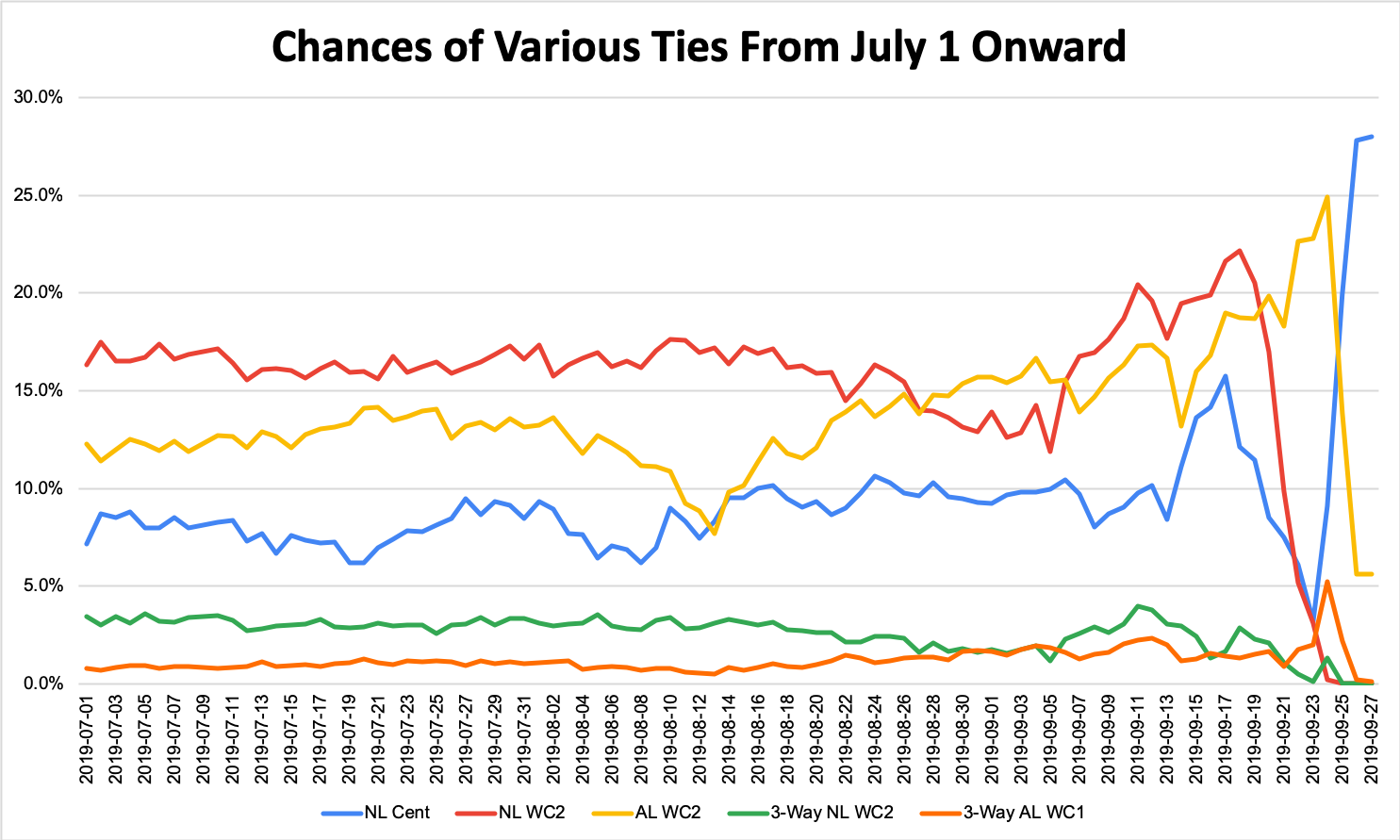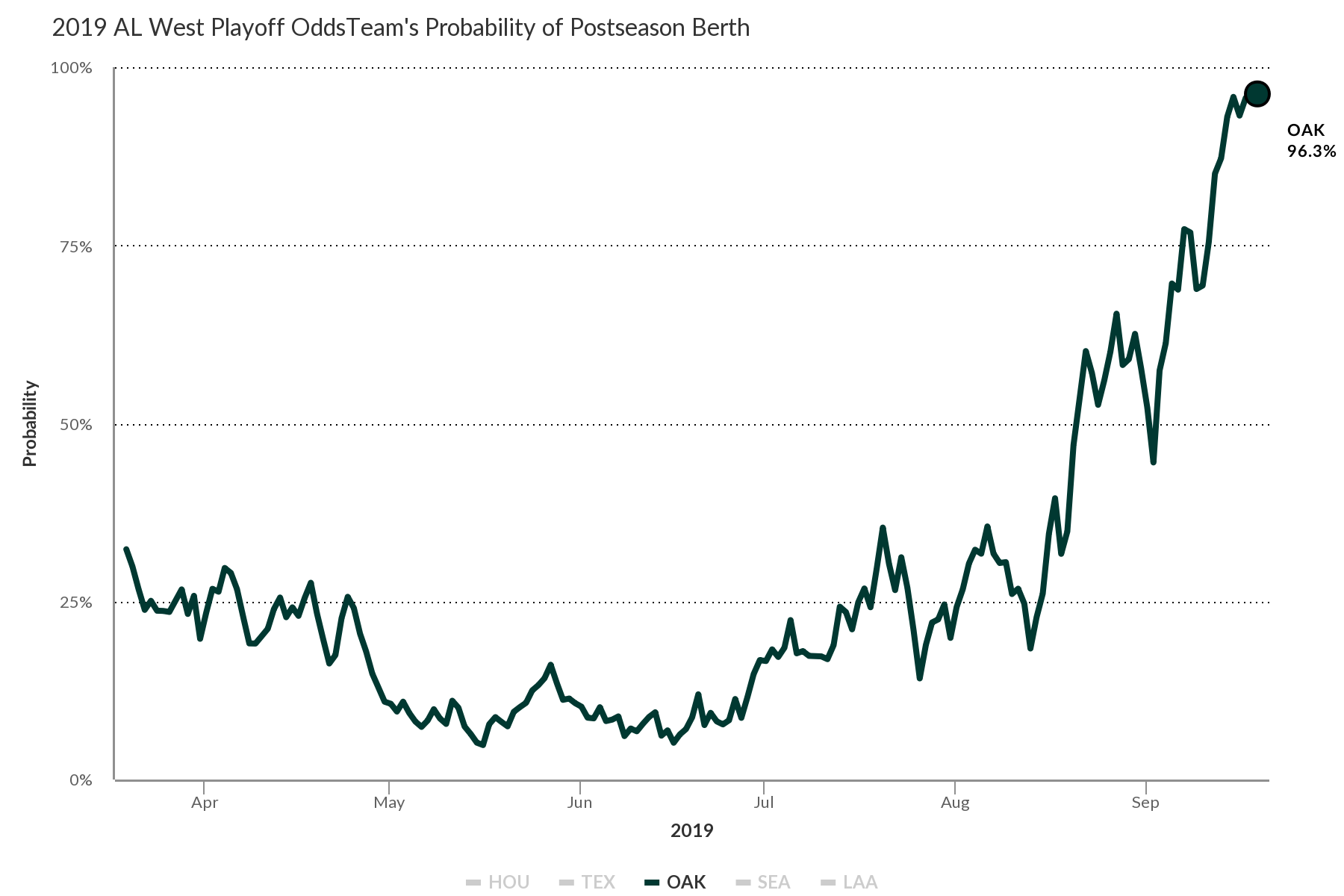Marcus Semien’s Defense Is a Team Effort
Let’s start with the obvious: Defense hasn’t been the big surprise of Marcus Semien’s 2019. That story was written a few years ago. The big surprise of Semien’s 2019 has been that in consequence of a .373 wOBA and 7.5 WAR, he has precisely doubled the value he produced last year in the second-best season of his seven-year career. I wrote about Semien’s offensive breakout in May, noting his much-improved plate discipline, and suggesting that its probable cause — a change in approach at the top of the strike zone — augured continued success. Dan Szymborski picked up the thread in July, finding much the same, and also discussing Semien’s defense at some length. Dan concluded:
[D]efensive numbers are volatile, so having a second year of improved defensive numbers significantly betters the chances that Semien’s reinvention with the glove is for real. That the improvement is largely driven by error rate is an even more promising development because though errors themselves aren’t a great measure of defense, error runs tend to be more predictive on a year-to-year basis than range runs. This isn’t surprising given that range numbers necessarily have to jump into evaluating theoretical plays that never happened. In error runs, Semien’s +4.6 ties with Paul DeJong for the best in baseball at any position in 2019. If he continues on this pace, he will have added roughly 20 runs compared to the 2015 season, simply from avoiding errors.
Going into the final day of the season, Semien was +6.9 ErrR, which put him 19.5 runs ahead of 2015’s abysmal mark, and contributed no small amount to his overall WAR figure (which, incidentally, Dan optimistically projected for six runs in July, and which Semien blew past in August). In this piece, I want to pick up on something a commenter on Dan’s piece pointed out: that the major improvement in Semien’s defensive numbers came not right after his much-ballyhooed 2015 heart-to-heart sessions with Ron Washington, but over the course of 2017 — right when Matt Chapman became the A’s everyday third baseman.
| Year | ErrR | DRS | UZR/150 |
|---|---|---|---|
| 2015 | -12.6 | 5 | -12.2 |
| 2016 | -3.5 | -6 | -5.5 |
| 2017 | 0.5 | -9 | -6.2 |
| 2018 | 0.0 | 9 | 6.4 |
| 2019 | 6.9 | 3 | 5.0 |


